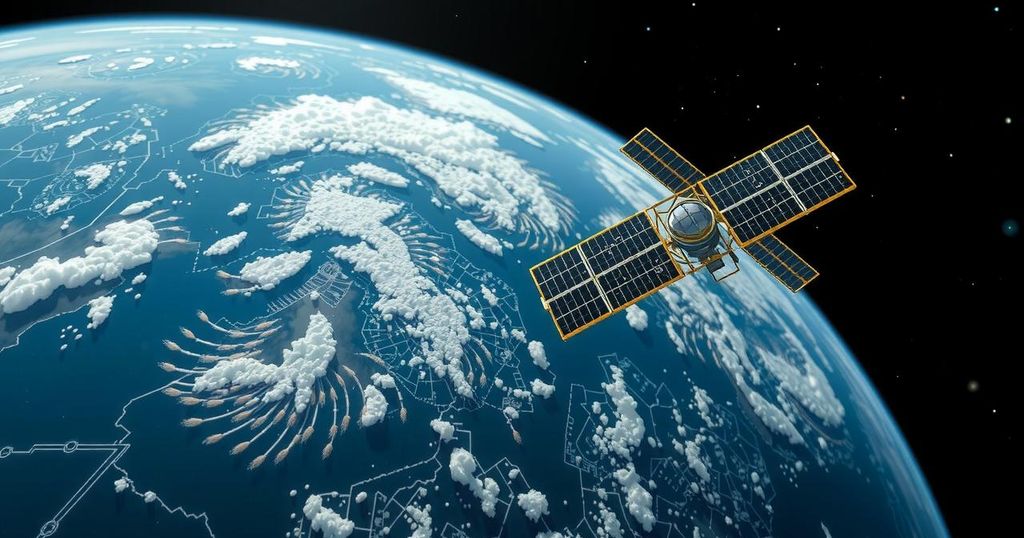The GOES satellite program plays a critical role in monitoring weather and providing advanced warnings for severe storms, such as Hurricanes Helene and Milton. The collaboration between NOAA and NASA has resulted in the deployment of advanced satellites that ensure timely data dissemination to safeguard lives and property. The Aerospace Corporation has been pivotal in this effort, contributing technical support and enhancing the capabilities of weather monitoring systems. Future initiatives like GeoXO will expand upon these advancements, addressing emerging environmental challenges.
As Hurricane Helene made landfall in Florida on September 27, the Geostationary Operational Environmental Satellites (GOES) system of the National Oceanic and Atmospheric Administration (NOAA) played a pivotal role in monitoring the storm. With advanced warnings issued as the hurricane formed, the GOES satellites demonstrated their crucial function in natural disaster preparedness. Just a fortnight later, Hurricane Milton, a potent Category 3 storm, followed suit, underscoring the importance of timely satellite data in saving lives and property. The collaboration between NOAA and NASA in maintaining the GOES program allows for consistent monitoring of the Western Hemisphere from approximately 22,300 miles above Earth. This two-satellite system, comprising GOES-East and GOES-West, has significantly advanced U.S. weather forecasting, effectively safeguarding over a billion individuals in the Americas through real-time data and imaging. The current generation, known as the GOES-R series, represents the most advanced fleet for geostationary weather monitoring. The Aerospace Corporation has been instrumental in the GOES-R program, contributing technical expertise throughout its lifecycle. As noted by Peter Phillips, Principal Director in the Civil Systems Group at Aerospace, their embedded systems engineering support is vital, working collaboratively with NOAA and NASA to navigate complex challenges within the mission framework. The data collected has become invaluable, supporting global weather services and contributing to life-saving early warnings for natural disasters. Weather satellites have evolved since the launch of the first GOES satellite in 1975, providing critical data that prevents loss of life and property during severe weather events. Historical disasters, such as the Galveston Hurricane of 1900, highlight the vital need for advanced weather prediction technologies. As Phillips remarked, “The motivation for weather prediction eventually led to weather satellites, and that directly contributes to preserving life, health and property.” GOES-16, operational as GOES East, was launched in 2016, with its successor, GOES-19, set to take its place in 2024. The launch of GOES-19 exemplifies the continuing evolution of satellite technology, bringing enhanced capabilities to monitor Earth’s conditions. Its Advanced Baseline Imager (ABI) provides detailed imaging across various wavelengths, enhancing understanding of atmospheric dynamics. The GOES-R initiative also emphasizes robust ground systems designed to handle vast data flows for user accessibility. Aerospace has played a key role in developing these systems, ensuring a seamless transition and effective operational capabilities following the launch of the satellites. The widespread dissemination of data underscores the GOES program as a strategic diplomatic tool for the United States, with NOAA providing free weather data worldwide for five decades. Contributions of Aerospace personnel have garnered recognition, with accolades including NASA’s Distinguished Public Service Medal awarded to Peter Phillips for his leadership in the program. Additionally, Renee Dudley received accolades from NOAA for her work on innovative satellite technologies, exemplifying the continuing commitment to advancing weather monitoring and safety protocols. Looking ahead, NOAA is planning the Geostationary Extended Observations (GeoXO) system to build upon the capabilities established by the GOES-R series. This next-generation program is projected to address emerging environmental challenges, further enhancing weather forecasting abilities. Aerospace is already engaged in preliminary studies assessing the upcoming program’s economic impact, which, as Phillips mentioned, could reach into the billions annually. Therefore, the essential nature of weather satellites in our response to natural disasters cannot be overstated, manifesting significant benefits for society at large.
The role of weather satellites has become increasingly vital due to the need for accurate and timely weather predictions, especially in the face of severe natural disasters. The GOES program has evolved significantly since its inception in 1975, with advancements in technology enabling improved forecasting and monitoring capabilities. The collaboration between aerospace authorities and government agencies like NOAA and NASA has facilitated the deployment of advanced satellite systems that provide critical data to protect life and property, particularly in hurricane-prone regions.
The advancements in the GOES satellite systems reflect a significant leap in weather monitoring technology, showcasing the collaborative efforts of NOAA, NASA, and technical experts from Aerospace. Continuous improvements and the upcoming GeoXO initiative are poised to bolster our capacity to predict and respond to environmental challenges, thereby enhancing the safety and preparedness of communities vulnerable to natural disasters. The value of reliable weather data extends far beyond economic measures, underpinning the fundamental importance of satellite technology in safeguarding lives and promoting public welfare.
Original Source: aerospace.org






